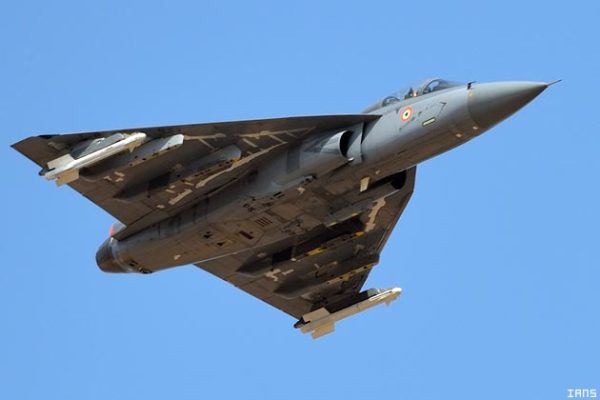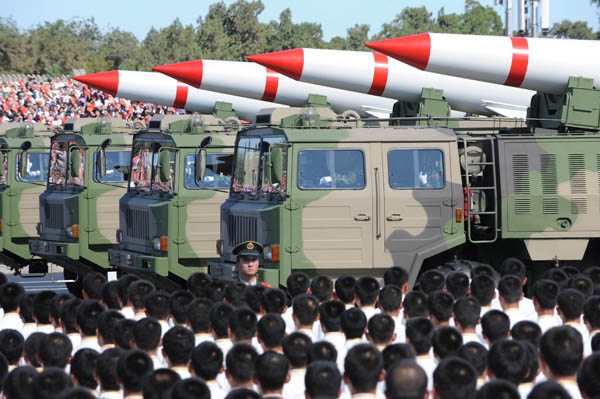The Indian Air Force (IAF), like all Air Forces, is highly technology dependent. Its effectiveness stems in large part from the technological sophistication of its equipment and the levels of expertise of its personnel in equipment utilisation. Equipment sophistication and the quality of personnel dictate the efficiency and effectiveness of the IAF. After a long gap, it is currently undergoing a major modernisation process in equipment up-gradations. There are currently several issues of immediate (from the present to five years hence) concern to the IAF. A few of the more important issues are discussed below.
Accident Rate
The IAF still has one of the highest accident rates in the world. This translates into a loss of between half and one complete squadron of aircraft per year apart from aircrew losses due to injuries or fatalities. Earlier, this high accident rate was attributed to the lack of an Advanced Jet Trainer (AJT), which forms the link between trainer aircraft and fast jet fighters.
However, IAF aircrew have been training on the British Aerospace Hawk AJT for at least five years now. Yet, the accident rate does not reflect a major reduction in spite of the Hawk being in service and in use. These losses are a cause for concern.
In early 2012, the IAF lost two Mirage-2000 aircraft within a couple of weeks of each other. In 2011, a MiG-293 and several other aircraft were lost, with a few pilot fatalities. That the induction of the AJT has not reduced the accident rate significantly indicates that the problem lies elsewhere.
The IAF may consider sanctioning an external audit of its functioning to identify the cause(s) of this slow attrition. It can outsource such an audit to one of the Indian Institutes of Management (IIMs) or to an expert body such as the L’Institut Français de Sécurité Aérienne (IFSA), Paris. An external audit may help identify areas where the IAF needs to modify its functioning in order to become more effective and to reduce wastage. This becomes important in light of the situation of there having been several internal audits on the subject of excessive accidents which, obviously, have failed to find a solution to the problem. A fresh look by an external agency may be the first step in finding an answer to this question.
Manning Levels
The IAF has raised several new units in the past few decades, including new Surface-to-Air Missiles (SAMs), Remotely Piloted Aircraft (RPA) and new radar units, among others. These raisings have for the major part been done, for a variety of reasons, from within existing manpower resources. The result is that while Air HQ may, after perusing its data, say that there is actually no shortage of personnel in the service, field units are facing an acute manpower shortage. This has been caused by most units shedding a few personnel so that the new units can be manned. A solution to this problem is for the service to insist on a revision of its overall cadre in order to ensure that all units are manned as per their authorisations.
A surprising fact is that while the IAF faces a shortage of officers in all branches, there are several women officers fighting to stay on for a full service term of 20 years plus; the IAF is declining their request. The Soviet Union fielded women fighter pilots in World War II, at least five of whom became Aces (five or more air-to-air kills in aerial combat). The Pakistan Air Force (PAF) has a few women flying fighters in operational units as do the Chinese. One woman pilot of the PAF was reported to have ejected safely from her F-7 fighter in the first half of 2011. The reasons for denying women entry into permanent commission in the IAF and allowing them to serve in all branches (including combat duties and fighter squadrons) may not be tenable in the medium to long run. The women who have joined in the ground duties branches and the transport and helicopter flying streams of the IAF have performed their duties as well as their male counterparts.
Another point of concern here is the large number of pilots seeking premature release from the IAF in order to seek a career in civil aviation. While pay and perks issues have been more or less looked after by the Sixth Central Pay Commission to the satisfaction of most officers, other issues of service life such as promotion avenues, frequency of postings, children’s education, etc., play a part in premature release cases. The IAF may consider looking into these issues to retain its highly-trained manpower, the release of which is accompanied by the loss of considerable man-years of irreplaceable experience.
Falling Force Levels and Budget Issues
The IAF was authorised in the mid-1960s to build up to a 64 squadron force, including 10 transport squadrons and a heavy bomber squadron. The IAF actually was able to build up to just 39.5 squadrons. With delays in induction of the LCA Tejas and the early retirement of a few types such as the MiG-23BN, MiG-21FL and MiG-21M/MF in addition to the Canberra and Hunter, the actual fighter aircraft strength has fallen to close to 32 squadrons. These reduced numbers are of major concern to the IAF. It has been extending the license for building the Su-30MKI to increase these numbers to 272 while expediting the Medium Multi Role Combat Aircraft (MMRCA) evaluation programme to stem the fall in available squadrons.
The French Rafale has been short-listed for detailed contract negotiations in the MMRCA competition. This programme for 126 aircraft, despite licensed production of all but 18 aircraft, is still likely to cost between US $10 and 20 billion. While it was presumed a few years ago that funds for defence would not be a constraint in the future, a slowing economy has led to these funds being curtailed. The Ministry of Finance questioned the Rs. 65,000 crore earmarked for infrastructure development and raising of new mountain strike corps earlier this year, while the defence budget for 2011-12 saw cuts of a few thousand crore of rupees. The nominal increase in the defence budget for 2012-13 is about 17 per cent, which amounts to a real increase of just about 8 per cent after taking into consideration the inflation rate of 9 per cent. The writing on the wall is clear: resource constraints are looming for the armed forces. Imports of defence equipment do not contribute to GDP growth while indigenous design and manufacture do. The IAF would do well to look at indigenous development of equipment to maintain or build up numbers. While this is in progress, retirement of in-service equipment would have to be delayed somewhat to maintain numbers at the desired levels.
Training
The IAF maintains an elaborate training infrastructure. This includes basic, mid-career and advanced training. The training set-up falls short in the availability of suitably qualified staff. The instructors at even Class ‘A’ training establishments comprise graduates of the same institutes with suitable grading. These officers do not have the minimum civil qualifications of repute such as Masters degrees or PhDs.
The IAF may consider outsourcing some training to suitable civil institutes while building up a cadre of suitably qualified staff to man its training institutes.
Cyber Warfare
The IAF is increasingly becoming more networked. The Air Force Net (AFNET), an in-house Air Force wide Wide Area Network (WAN), is up and running. This has the capability to increase efficiency of the service, but it also brings with it a critical vulnerability. The IAF needs to develop robust capabilities for defending this asset against cyber attacks. Given the importance of information technology the world over, the IAF also needs to develop a strong cyber attack capability. This has to be undertaken on a war footing.
Conclusion
The Indian Air Force has had a glorious history since its formation in 1932. Eighty years later, it is in the middle of a major transformation through induction of modern state-of-the-art equipment. The multitude of challenges the IAF faces during this process, as discussed above, need to be addressed in order to ensure that it remains an effective fighting force.











